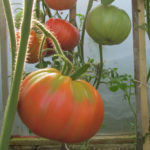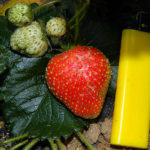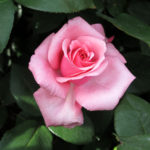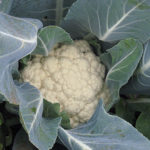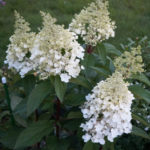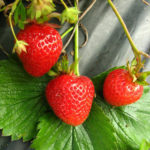Plum variety Anna Shpet
Anna Spath is a late-ripening variety of Prunus domestica of Western European origin. Obtained from a bone in the early 1870s in Germany by L. Shpet. The first description of this plum is dated 1881.
It became widespread throughout the south of the former Soviet Union, especially in the southern regions of Ukraine, in the North Caucasus and in the south of the Rostov region. According to the 1945 census of gardens, the largest number of Anna Shpet's trees were located in the Krasnodar Territory, here their share was 12.5%, the Rostov Region took the second place in the number of trees with a share of 12.6%, Kabardino-Balkaria accounted for 13, 8%, to North Ossetia - 7%, to the Volgograd region - 5.8%.
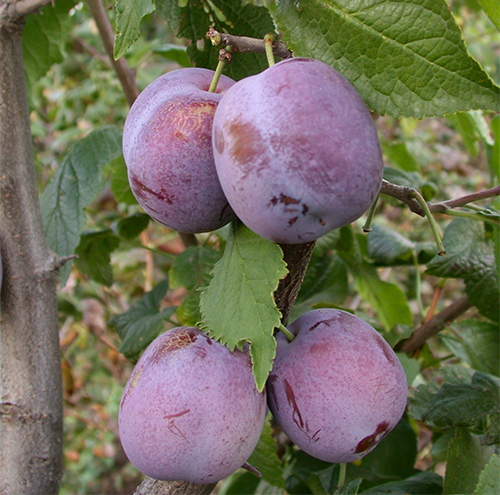
Plum Anna Shpet is included in the standard assortment of the Crimea, the Caucasus, the southern part of Ukraine in 1 - 2 groups, the Astrakhan and Volgograd regions - in 2 - 3 groups.
In 1947, the variety was sent to the State test. In the same year it was included in the State Register of the Russian Federation for the North Caucasus (Rostov Region, Krasnodar and Stavropol Territories, the Republic of Adygea, Dagestan, Ingushetia, Kabardino-Balkaria, North Ossetia-Alania, Karachay-Cherkessia, Chechen) and Nizhnevolzhsky (Astrakhan and Volgograd region, Republic of Kalmykia) regions.
The trees are vigorous, durable (reach 40 years of age), develop rapidly, tolerate rejuvenation well. The crown is dense, wide, round or round-pyramidal in shape, with durable (up to 12 years) overgrowing branches. The skeletal branches are quite thick. The stem is straight, smooth. The bark on the trunk is gray, on the skeletal branches it is light gray. Lentils are medium in size, there are an average amount on the stem. Shoots are straight, not pubescent, with lenticels, painted in a low-intensity brown or red-brown color; medium internodes (4 cm); spear and internal weak summer growths in color are grayish with a reddish tinge. Vegetative buds are small in size, cone-shaped, pointed, adpressed. Leaves are light green in color, below average size (average length - 7.3 cm, narrow - 3.8 cm, area - 27.8 cm), elongated-oval shape, with a pointed tip and a tree-like base, framed along the edge by a double-crested serration medium size. The leaf blade is thin, friable, flat in shape, the upper side is dull, not pubescent, the lower side is slightly pubescent along the central and lateral veins. Petioles are short (up to 0.8 cm), anthocyanin coloration. Glands one at a time: sessile, yellow. Stipules are absent.
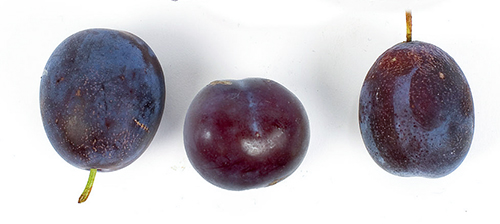
Inflorescences are two-flowered. The buds are white. The corolla is large (2.8 cm), flat in shape. The petals are of medium size (length - 1.3 cm, width - 0.7 cm), oval, with a rounded top, the edge of the top is wavy, the corrugation is medium, the closeness of the petals is medium, the color is white. There are a small number of stamens (18 pcs / color), their shape is straight, the length of the filament is 0.7 - 1.1 cm, the anthers are yellow. The calyx is bell-shaped, not pubescent. Sepals are lanceolate, non-pubescent, 0.7 cm long, 0.2 cm wide, there is no serration along the edge. Pedicels are of medium length (1.1 cm), without pubescence.
The fruits of the plum Anna Shpet are large in size (weighing 40 to 50 g, average weight 45 g, the largest specimens reach 60 g), isosceles, oval or broadly ovate in shape. The abdominal suture is wide, shallow, weakly expressed, does not crack. The main color of the fruit is light yellow, the integumentary color is solid dark purple with a reddish (or brick-brown) tint. The skin is thin, dense, of a loose consistency, with numerous subcutaneous dots of gray color and rare rusty streaks, covered with a thick gray waxy coating; it is easily removed from the pulp, especially when the fruit is immersed in hot water. The funnel is deep, of medium width. The peduncle is short, crocheted, rather thick.Medium-sized seeds (weight 1.5 g, length - 2.2 cm, width - 1.3 cm, thickness - 0.8 cm), elongated-oval, pointed towards the peduncle and rounded towards the top, painted in dark brown color. The surface is rough, pitted and tuberous. Open seam. The abdominal suture is narrow. The central rib is well pronounced. Lateral ribs are missing. The keel is small in size, blunt in shape. Separability from the pulp is good (in fully ripe fruits).
The pulp is greenish-yellow in color (in well-ripened fruits - golden), transparent, dense, tender, juicy, fibrous consistency; it darkens slightly in the air. The color of the cavity is one-color with pulp. The taste of plums is very good, sweet with pleasant sourness.
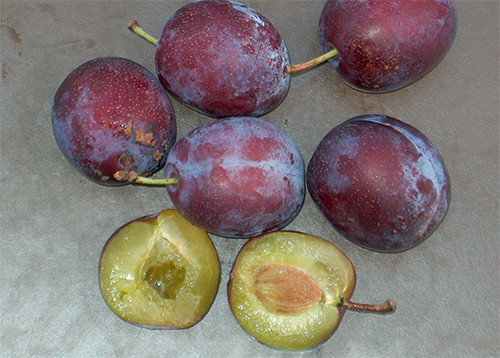
In terms of biochemical composition, plums on a raw weight contain: dry matter (15.7%), the amount of sugars (9.9%), pectin substances (0.80%), acids (0.73%), polyphenols (384 mg / 100 g), ascorbic acid (6.5 mg / 100 g); the sugar acid index is 13.56.
Tasting assessment of frozen fruits - 3.8 points; dried fruits - 3.9 points; juice with pulp - 3.8 points; compote - 4.2 points, marinade - 4.1 points. The variety is well suited for fresh and soaked consumption, as well as for some types of canning (preserves, marinades). Unsuitable for freezing and production of dried fruits. The sweetest plums are at the stage when the skin on them begins to wrinkle (it becomes, as it were, withered).
Flowering takes place in medium terms (mid-April). Fruit ripening period is very late (end of September - beginning of October). Removal can be done in one step, since ripe fruits continue to be firmly held in the trees. The early maturity of Anna Shpet plum is estimated as average: trees usually enter the fruiting season from the 3rd - 5th (in rare cases, from the 6th) year. The yields are high and regular. From 8 - 10-year-old trees collect from 25 to 40 kg of fruits, from 10 - 12-year-old - up to 60 kg. At the age of 15 - 20 years, during the full fruiting period, one tree can bear up to 150 - 250 kg of fruit. In a cold, dry room, plums are well preserved for more than 1 month. In rainy weather, the fruits crack, and also often and strongly rot.
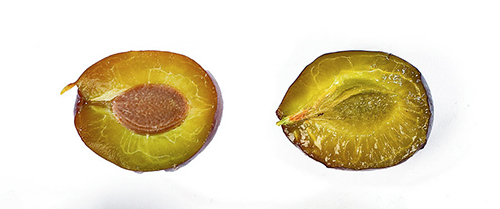
The level of winter hardiness of wood and flower buds is average. Average frost resistance. In the south of Russia, the variety is quite frost-resistant, but in the conditions of the northern regions of Ukraine and the Astrakhan region, the trees freeze slightly. In the south of the Voronezh and Kursk regions, rare single trees suffer greatly from frost and therefore are low-yielding. But thanks to the high regenerative abilities of the variety, even tree buds recover well after severe freezing. There is also a good restorative ability of wood after frost crushes and breakages. The general level of drought resistance is assessed as satisfactory. In the conditions of the steppe regions of the Kuban, trees work well and tolerate drought quite well.
The variety is relatively resistant to moniliosis (monilial burn) and polystygmosis (red spot). Resistance to other diseases is average. On calcareous soils, trees are severely affected by chlorosis.
This plum is partially self-fertile and produces very good yields even without pollinators. But the best results are obtained with cross-pollination. Good pollinators for her are varieties: Washington, Hungarian home, Hungarian Italian, Victoria, Ekaterina, Raisin-erik, Kirke, Rannaya, Renklod Altana, Renklod green, Peach.
The main advantages of Anna Shpet plum include: high yields, large fruits of very good quality, late ripening.
The main disadvantages are: susceptibility to diseases, high crown (when harvesting from an adult tree, you cannot do without a ladder), weak loose wood (trees often break in a hurricane wind), low canning qualities of fruits.
